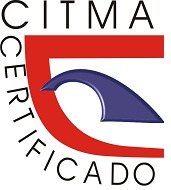Sistema inteligente para el diagnóstico pedagógico estudiantil
Palabras clave:
diagnóstico pedagógico, herramienta, inteligencia artificialResumen
En este trabajo se propone el software SAICCAD (Sistema para el Aprendizaje con algoritmos que utilizan Inteligencia Colectiva, Conjuntos Aproximados y Difusos), una aplicación de escritorio que posee interfaz amigable y a la vez fácil de utilizar. Tiene como objetivo principal ofrecer a la comunidad investigadora una herramienta tecnológica que permita aplicar algoritmos de selección de atributos, clasificación y predicción, con el uso de técnicas de Inteligencia Artificial (IA). Este artículo presenta la utilización del SAICCAD en el área de las ciencias pedagógicas, específicamente para el diagnóstico académico en el colectivo de año universitario, aunque su uso puede ser ampliado a otras esferas de la sociedad. El diagnóstico pedagógico es una premisa imprescindible en el proceso docente-educativo, que tiene en cuenta el análisis de las necesidades del estudiante y culmina en la toma de decisiones sobre las intervenciones que se pueden realizar. Con los resultados que el sistema ofrece, el profesor puede definir un grupo de acciones específicas para lograr que los estudiantes pasen el curso satisfactoriamente. Esta aplicación obtiene de manera rápida y precisa las variables más importantes que influyen en el proceso de diagnóstico pedagógico, a partir del conjunto de datos de los alumnos. Es un software que reúne elementos educativos, de análisis y predicción, que contribuye al objetivo Educación de calidad de la Agenda 2030 y a la informatización de los procesos educativos, como parte indispensable de la sociedad.
Citas
Alban, M. y Mauricio D. (2019). Neural networks to predict dropout at the universities. International Journal of Machine Learning and Computing, 9(2):149-153, 2019. http://www.ijmlc.org/vol9/779-ML0074.pdf.
Amaya, R. (1993). Diagnóstico pedagógico, fundamentos teóricos. Oviedo: Editorial Servicio de publicaciones de la Universidad de Oviedo. ISBN: 84-7468-794-2.
Area, M., Hernández, V. y Sosa, J. (2016). Modelos de integración didáctica de las TIC en el aula. Comunicar: Revista científica iberoamericana de comunicación y educación, (47): 79-87, ISSN: 1134-3478 e-ISSN: 1988-3293. http://dx.doi.org/10.3916/C47-2016-08
Cachón G. C., Martinez, R. G., Navalon, J. G. y Roman, C. P. (2019). Inteligencia Artificial para predecir la lealtad a la universidad. Journal of Management and Business Education, 2(1): 17- 27. http://doi.org/10.35564/jmbe.2019.0003
Chassignol, M., Khoroshavin, A., Klimova, A. y Bilyatdinova, A. (2018). Artificial Intelligence trends in education: a narrative overview, Procedia Computer Science, 136, 16-24. http://doi.org/10.1016/j.procs.2018.08.233
Chen X., DiZou X. y Hwang G. (2020). Application and theory gaps during the rise of Artificial Intelligence in Education. Computers and Education: Artificial Intelligence, 1, http://doi.org/10.1016/j.caeai.2020.100002
Constante Amores, A., Florenciano, E., Navarro, E. y Fernánd -Mellizo, M. (2021). Factores asociados al abandono universitario. Educación XX1, 24(1): 17-44. http://revistas.uned.es/index.php/educacionXX1/article/view/26889/24836
Cruz, E., González, M. y Rangel, J. (2022). Técnicas de machine learning aplicadas a la evaluación del rendimiento y a la predicción de la deserción de estudiantes universitarios, una revisión. Prisma Tecnológico, 13(1): 77-87. https://doi.org/10.33412/pri.v13.1.3039.
Bello, R., Filiberto, Y., Frías, M., & Mota, Y. C. (2013). Effects of using reducts in the performance of the irbasir algorithm. DYNA: revista de la Facultad de Minas. Universidad Nacional de Colombia. Sede Medellín, 80(182): 185-190. https://dialnet.unirioja.es/servlet/articulo?codigo=7681115
Fernández, Y., Filiberto, Y., Frías, M., Bello, R. y Caballero, Y. (2015). An improvement to the classification based on the measurement of the similarity quality using fuzzy. Dyna (Medellin, Colombia), 82, 70-76. http://doi.org/10.15446/dyna.v82n193.45989
Fernández, Y., Coello, L., Filiberto, Y., Bello, R. y Falcón, R. (2014). Learning Similarity Measures from Data with Fuzzy Sets and Particle Swarms.Ponencia presentada Electrical Engineering, Computing Science and Automatic Control (CCE), 11th International Conference, Campeche, México.
Fernández, Y., Filiberto, Y., Frías, M., Bello, R., y Caballero, Y. (2015). Una mejora a la clasificación basada en la medida calidad de la similaridad utilizando relaciones borrosas. DYNA, 82(193): 706. http://doi.org/10.15446/dyna.v82n193.45989
Fernández Y., Bello, R., Filiberto, Y., Frías, M., Coello L. y Caballero, Y. (2015). An Approach for Prototype Generation based on Similarity Relations for Problems of Classification. Computación y Sistemas, 19(1): 109-118. http://doi.org/10.13053/CyS-19-1-2053
Fernández Martín, T., Solís Salazar, M., Hernández Jiménez, M. T. & Moreira Mora, T. E. (2019). Un análisis multinomial y predictivo de los factores asociados a la deserción universitaria. Revista Electrónica Educare, 23(1): 73-97. http://dx.doi.org/10.15359/ree.23-1.5
Frías, M. (2015). Métodos de aprendizaje basados en prototipos usando la teoría de los conjuntos aproximados extendida. Tesis de maestría no publicada, Universidad Central Marta Abreu de Las Villas, Villa Clara, Cuba.
Filiberto, Y. y Bello, R. (2010). Using PSO and RST to Predict the Resistant Capacity of Connections in Composite Structures. Ponencia presentada en International Workshop on Nature Inspired Cooperative Strategies for Optimization (NICSO 2010) Springer, Alemania.
Filiberto, Y., Bello, R., Caballero, Y. y Frías, M. (2011). Algoritmo para el aprendizaje de reglas de clasificación basado en la teoría de los conjuntos aproximados extendida. Revista DYNA.
Frías, A., Sandoval, A., Salvador, G., Muñoz, A. L., Guzmán, M. y Cruz, G. (2015). El diagnóstico como estrategia para la inducción del pensamiento relacional en la carrera de Biología. Revista de la Educación Superior, 43(169): 107-124. http://doi.org/ 10.1016/j.resu.2015.01.004
González, D., Picie, J. I., Hernández, C. y Onofre, E. (2019). Nodes: Plataforma para la predicción de deserción escolar utilizando técnicas de inteligencia artificial. Repositorio institucional de la Universidad de Veracruz. http://reini.utcv.edu.mx:80/handle/123456789/1328.
Hoyos, J. y Daza, G. (2023). Predictive model to identify college students with high dropout rates. Revista Electrónica de Investigación Educativa, 25, e13, 1-10. https://doi.org/10.24320/redie.2023.25.e13.5398.
Chuquimarca, D. K. F., & Sacan, J. E. G. (2019). Competencias digitales para los nuevos escenarios de aprendizaje en el contexto universitario. Revista Scientific, 4(14): 44-61. https://orcid.org/0000-0003-2245-0873
Levano Francia, L., Sánchez, S., Guillén Aparicio, P., Tello Cabello, S., Herrera Paico, N., y Collantes Inga, Z. (2019). Competencias digitales y educación. Propósitos y Representaciones, 7(2): 569-588, ISSN: 2307-7999; e-ISSN: 2310-4635. http://doi.org/10.20511/pyr2019.v7n2.329
Maldonado, M. (2018). El aula, espacio propicio para el fortalecimiento de competencias ciudadanas y tecnológicas. SOPHIA, 14(1): 39-50, ISSN: 1794-8932; e-ISSN: 2346-0806. http://doi.org/10.18634/sophiaj.14v.1i.822
Naciones Unidas (2018), La Agenda 2030 y los Objetivos de Desarrollo Sostenible: una oportunidad para América Latina y el Caribe (LC/G. 2681-P/Rev. 3), Santiago.
Prieto López, Y. & Ayala Pazmiño, M. (2020). Modelo Pedagógico de Supervisión, Evaluación y Acompañamiento a los docentes de la Unidad Educativa Bilingüe Torremar (UEBT). Digital Publisher CEIT, 4, 69-77. http://doi.org/10.33386/593dp.2020.4.218
González, Y. R., Sánchez, N. M., Luque, M. M., & Orfe, B. H. R. (2021). Contribuciones a la didáctica de la Inteligencia Artificial en la formación del Ingeniero en Ciencias Informáticas. Revista Cubana de Ciencias Informáticas, 15. https://rcci.uci.cu/?journal=rcci&page=article&op=view&path[]=2281
Tenesaca, J., Medina, I. y Álvarez, M. (2021). Diagnóstico pedagógico y autoaprendizaje en la formación de profesores de lenguas extranjeras. South Florida Journal of Development. 27111-7121. http://doi.org/10.46932/sfjdv2n5-058
UNESCO (2008). Estándares Unesco de Competencia en Tic para Docentes. París: Organización de las Naciones Unidas para la Educación, la Ciencia y la Cultura (UNESCO). Recuperado de: http://eduteka.icesi.edu.co/articulos/EstandaresDocentesUnesco
Yang, S., Ogata, H., Tatsunori, T. y Chen, N. (2021). Human-centered artificial intelligence in education: Seeing the invisible through the visible. Computers and Education: Artificial Intelligence, 2. http://doi.org/10.1016/j.caeai.2021.100008
YiLin, P., Chai, Ch., Siu-Yung Jong, M., Dai, Y., Guo, Y. y Qin, J. (2021). Modeling the structural relationship among primary students’ motivation to learn artificial intelligence. Computers and Education: Artificial Intelligence, 2. http://doi.org/10.1016/j.caeai.2020.100006
Publicado
Cómo citar
Número
Sección
Licencia
Derechos de autor 2024 Yumilka Bárbara Fernández Hernández, Olga Pérez González, Yanela Rodríguez Álvarez, Yaile Caballero Mota

Esta obra está bajo una licencia internacional Creative Commons Atribución-NoComercial 4.0.












